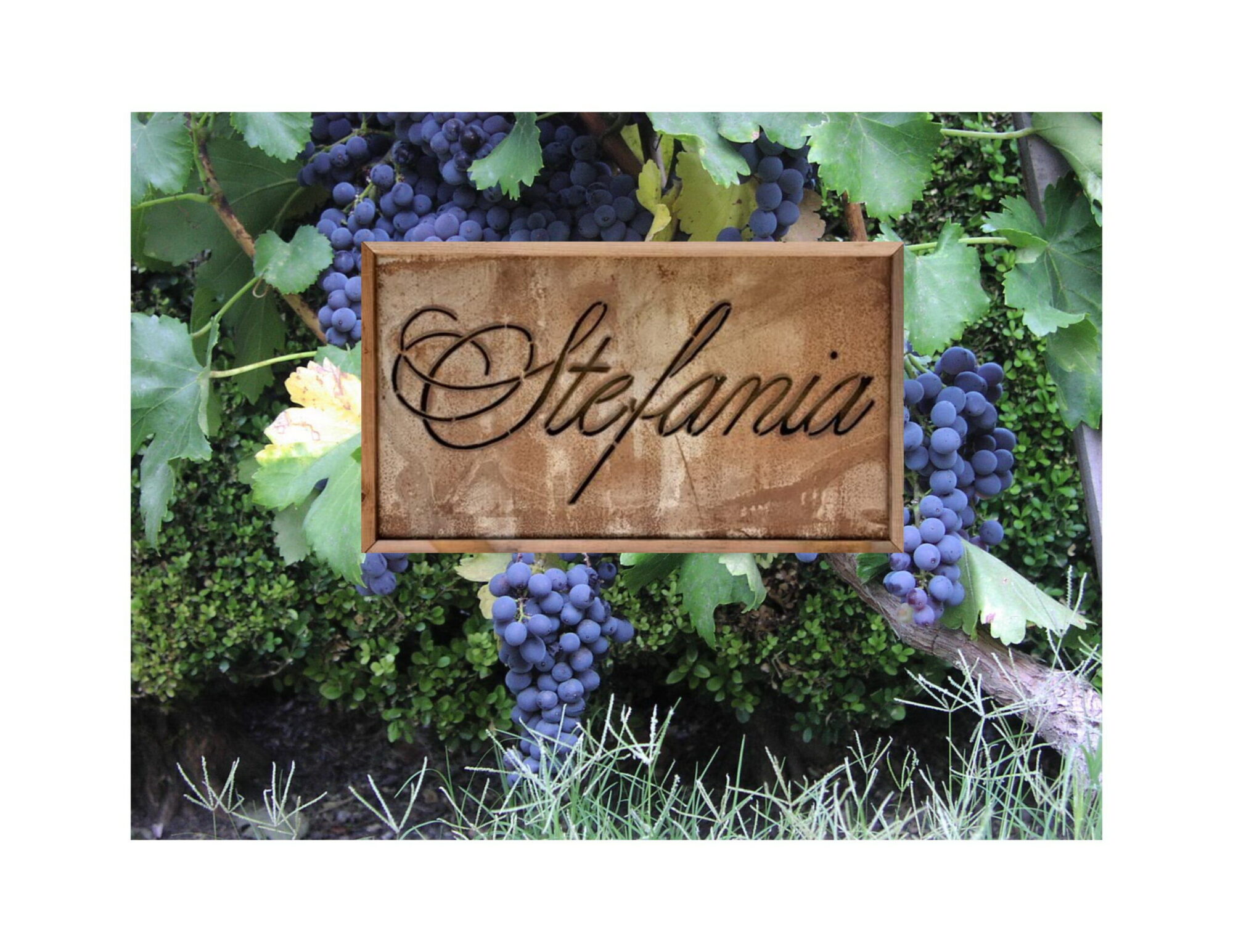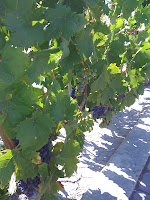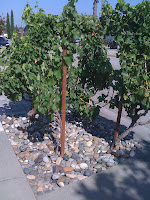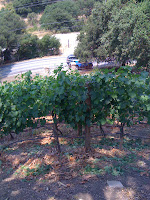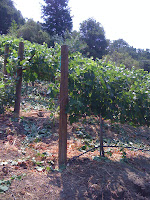On the 19th we were in the cellar topping up wine and checking on each barrel.
Here are my notes from the day. These are the summary notes, rather than the individual barrel notes.
2006 Uvas Creek Vineyard Cabernet Sauvignon, Santa Clara Valley (5 barrels @ 125 cases)
Deep red and ruby color. Nose of red Bing cherries, summer berries and ripe plums with a hint of mocha and spice. The wine is layered on the palate, with multiple layers of fruit and spice and an underlay of vanilla and toast. Flavors are well balanced and the tannins are ripe and long, promising a good 8+ years of ageing potential. Finishes fresh, clean and fruity.
To me this is a clear step up from the 2005 with more layers of fruit, depth, and texture while still reflecting the red fruit nose and ripe tannins of the site.
2006 Cabernet Sauvignon, Santa Cruz Mountains. (4 barrels @ 100 cases)
Very dark red to almost purple with complete saturation. Nose of Eucalyptus, mint, summer herbs, fresh berries and ripe plum. The nose is not shy, it’s unique, powerful and well defined. The only wine I can compare this to is the Cline Small Berry Mourvedre on the nose. Palate is plush and dense, a ‘big boy’ style Cabernet, with layered dark berry fruit, currant, cigar box and spices. The mint and Eucalyptus which is so forward on the nose, melds behind the fruit on the palate. Finishes long with great persistence.
This is my personal favorite. I haven’t made another wine quite like this. I think this wine can age and evolve for 10+ years. There are a number of friends who had babies in 2006, and I’ll be happy to give them bottles that should still show well on their kids 21st birthday.
2007 Pinot Noir, Santa Cruz Mountains (2 barrels @ 50 cases / 25 will be available for sale)
Pale red, clear and bright. Nose of tart cherry, strawberry and raspberry. Some spicy vanilla comes out on the palate, with a little hint of fresh nuts, and that’s the only minor clue that this wine has been in 50% new oak. Otherwise it’s all cherry and raspberry fruit with some hints of plum and spice. Finish is clean and bright.
I think this wine will shock a lot of people. It looks like a light weight and smells so delicate, but carries a lot of flavor and density on the palate. I’m happy with this wine, I think it reflects the Tierra of the southern Santa Cruz Mountains very well.
2007 Haut Tubee, California (1 barrel, @ 25 cases)
Dark Purple. Nose is spicy, with herbs and red cherry fruit. Cherry, dark fruit and sweet summer plums on the palate. This wine is a bit of a monster right now. Showing a little heat and massive tannins. Finishes hard and massive.
This wine needs a racking to soften the tannins, and will eventually be blended with 2 barrels of Eaglepoint Ranch Syrah to round it out and soften it. Should be a good follow up to the 06.
2007 Santa Cruz Mountains Cabernet Sauvignon (6 barrels @ 150 cases / Elandrich vineyard, Harvest Moon vineyard, Chaine d’Or vineyard)
Very dark to purple. Nose of cigar, peppercorn, cherry and fresh plum fruit. Round, juicy and layered on the plate with notes of red and black fruit, spices, pepper, currant and cedar. Tannins are long and in need of racking.
This wine is not as dense as the 06 version due to the higher percentage of the more red fruit dominate Elandrich vineyard. Evolving nicely, this should turn into a well layered, and long lasting classic SCM Cabernet.
2007 Chaine d’Or Vineyard Cabernet Sauvignon, Santa Cruz Mountains (7 barrels @ 175 cases)
Very dark, purple notes, darkest wine I’ve made at this point. Nose of muted fruit, pepper, spice, cherry and plum, with a floral quality that’s surprising given the color. Round, soft with big ripe tannins. Fruit is layered behind those tannins right now, this will need 18 months in barrel. Finishes with spice, berry and mocha. Classic, classic Cabernet Sauvignon.
I’ve upped the new oak on this a bit with a racking we did and it’s now in 4 new barrels and 3 old. I think this fruit needs the new oak to soften and layer. It sure can stand up to it, it’s hard at this point to pull any oak flavors out.
I left a sample for Anne and Jerry Anderson who had made the previous vintages since 1990. Here’s Jerry’s notes:
“Here are my (and Anne’s) thoughts:
Lovely garnet color, still a little purpley which will go away with age. Obvious floral flavors, possibly from the barrel – don’t recall these ever before. Good structure. Typical CdO taste with subtle tobacco, leather, hints of restrained fruit, not excessive, more in the European tradition. Mature vine berry flavor without being pruney, hot weather or over ripe.
Fingers crossed, this wine should be spectacular.”
